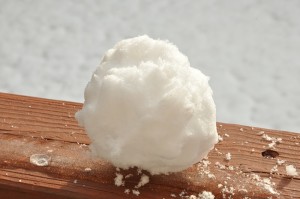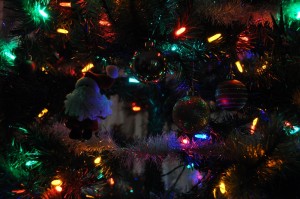This weekend, my neighborhood in Toronto witnessed the first real snowfall of the season. For me, it’s a relief to finally have snow this year since I view it as the epitome of winter. However, over the last few years, the essence of winter has been changing as global warming continues to melt the snowflakes of our winters.
When I was a child, winters meant making snowballs, snowmen, snow forts and snow angels. I saw the first snowfall of the year as a delightful reminder that Christmas, my favourite holiday of the year, was approaching. I saw something magical in those snowflakes because I knew I would soon see them, on the ground or in the air, on Christmas morning. But throughout the last few years, the meaning of the snowflakes has been changing as winters continuously become warmer.
Three years ago, something was missing on Christmas: for the first time ever, I did not see snow in Toronto on my favourite holiday. Two more Christmases went by and I still did not see any snow that day. And although I do see snow sometimes in the winter, there’s something different about it. The message of the first snowflakes each winter is less magical. They no longer assure me of their presence on Christmas Day.
As we experience increasingly warmer winters, Environment Canada statistics show that since 1955, the chances of getting a white Christmas have been dropping every year across Canada.
The likelihood of white Christmases will likely continue to drop as humans increase their CO2 emissions and global warming continues.
But the Christmas snowflakes are not the only ones threatened by warmer winters. A new documentary, Chasing Ice, explains some of the other problems that arise with the changing climate:
With rising temperatures, sea levels rise. Current estimates show that sea levels could rise between 4 and 36 inches in the next 100 years. This would mean disaster for millions of people around the world.
Further, research indicates that climate change raises the probability of an increase in the number of storms we encounter each year and their severity. There is also a higher risk of droughts and fires, since an increasing amount of moisture evaporates, resulting in dry areas that are more susceptible to fires.
With a warmer climate, more people will also suffer from climate-sensitive diseases, such as malaria.
As for wildlife, some scientists predict that 25% of the species on our planet will be extinct by 2050, if global warming continues at the current rate.
For these reasons, and many more, I am saddened by the increasingly warmer winters every year. Perhaps part of the magic in the snowflakes is in knowing that we need them. And perhaps that is why I miss their absence on Christmas Day. There is certainly a deeper meaning to the disappearing snow as it represents global warming and the problems that we need to know.

Follow